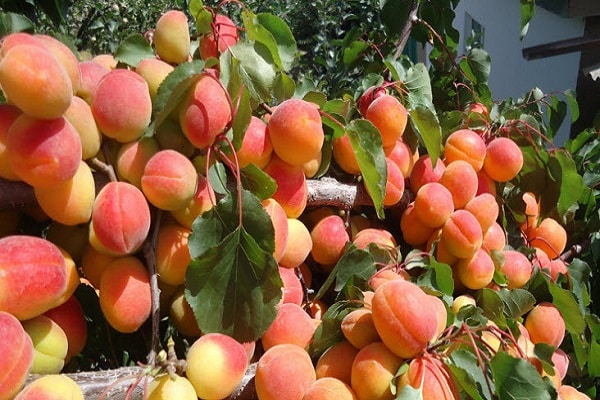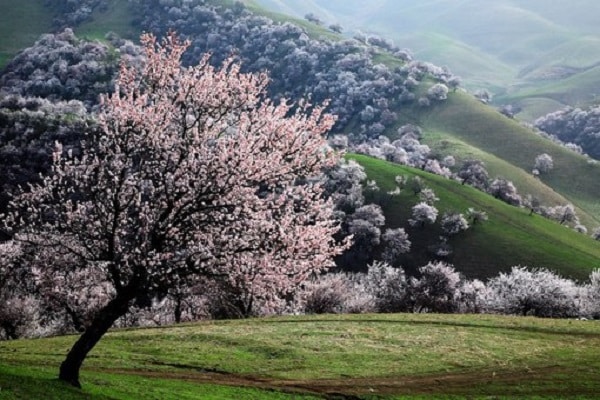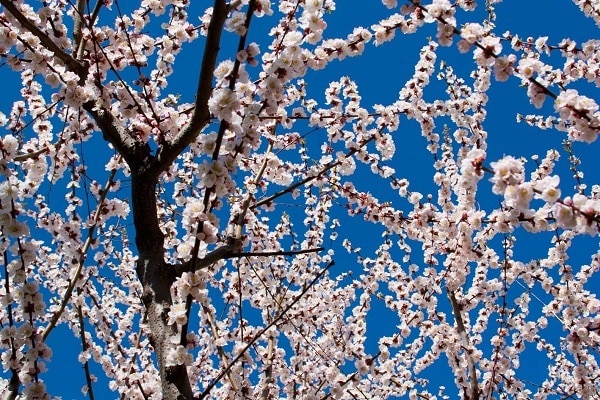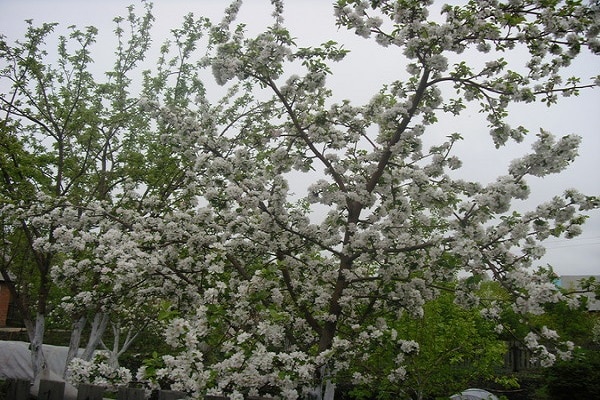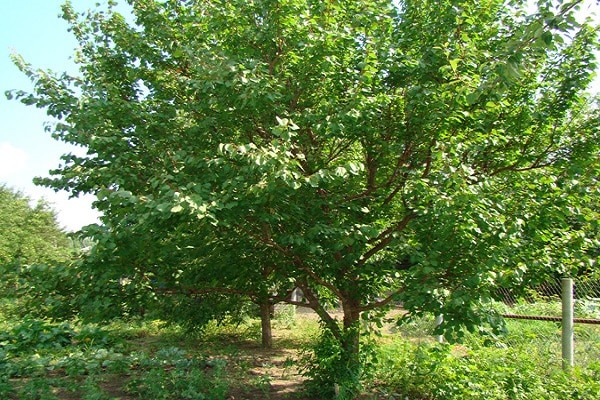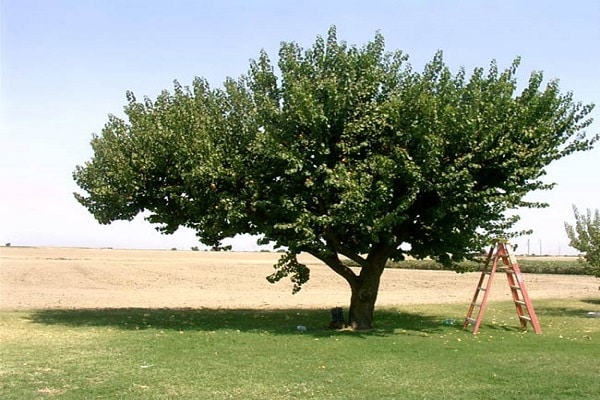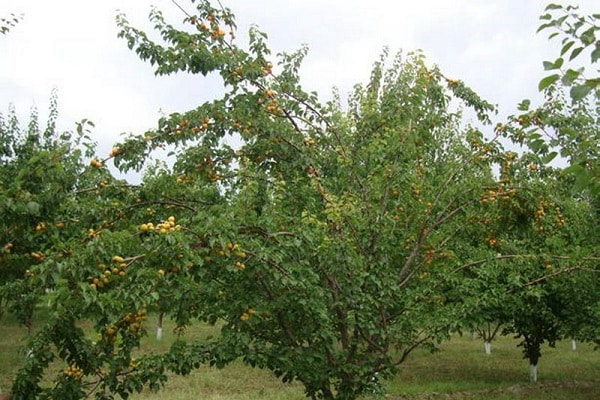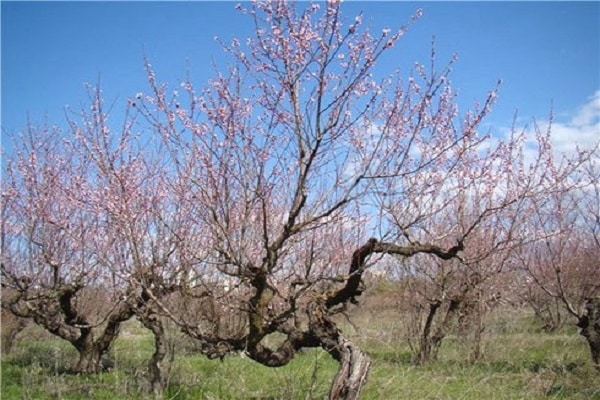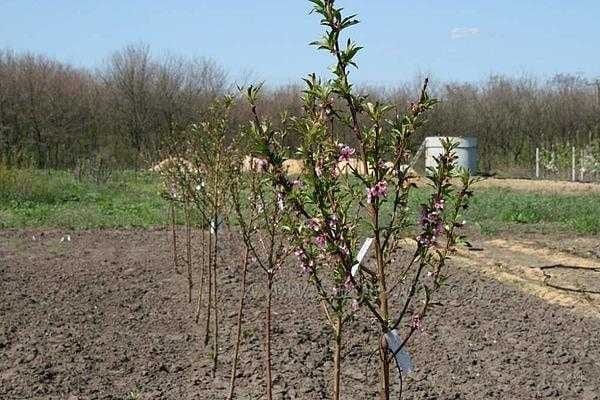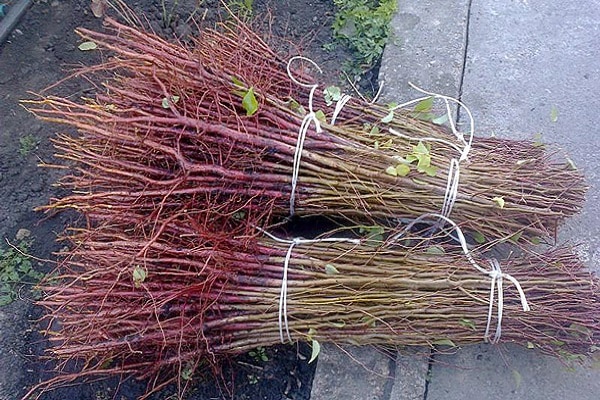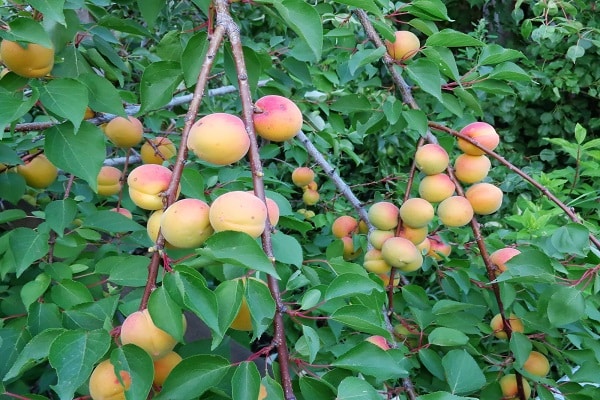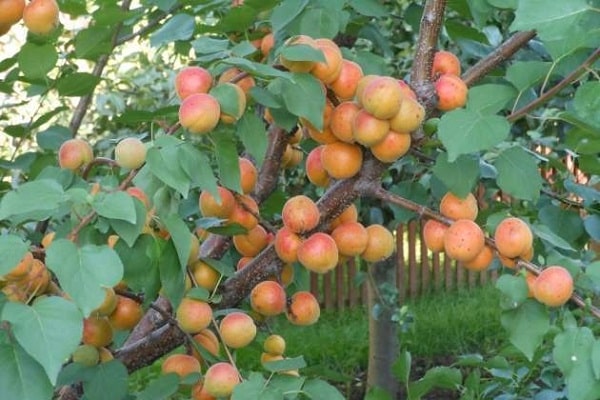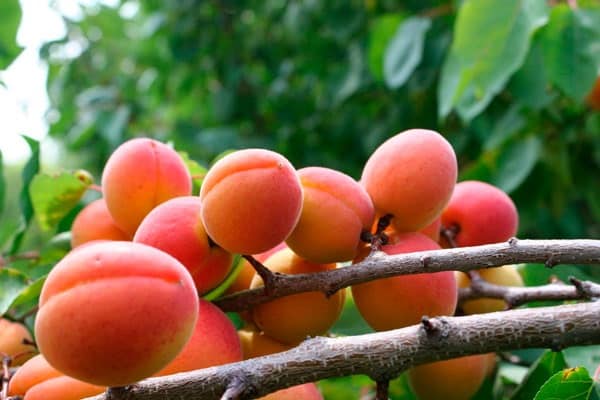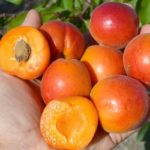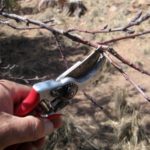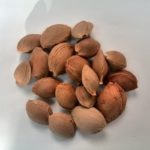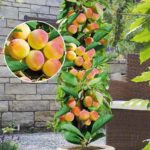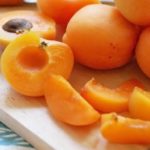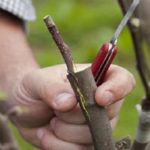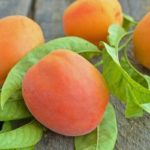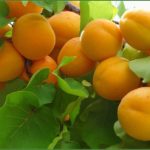Apricot is an unpretentious tree, but requires competent and timely care. If preventive measures taken to improve the growth and quality of the crop are violated, the tree may stop bearing juicy fruits or even become empty-flowered. Why doesn’t apricot bear fruit, and what to do if the fruits don’t ripen? Let's look at the main causes and ways to eliminate them.
Main reasons
It all starts with the flowering of the apricot tree - there are no flowers, there will be no fruit. If the flowers become empty or do not appear at all, then there is a problem that needs to be solved. The first factor that causes this unpleasant phenomenon is a genetic failure. This is a rare phenomenon inherent in any element of living nature.
Some trees are not capable of bearing fruit, therefore, when buying seedlings in specialized stores or developing a new variety by cuttings, it is necessary to take this important point into account. However, there are other factors that prevent the tree from fulfilling its biological program. We will talk about them further.
Wrong place
The apricot tree is not known for its high survival rate, so choosing a place for its growth is an important point. You need to pay attention to the climate and soil composition suitable for the variety being grown, however, general recommendations for any type of apricot tree still exist.
Weather
The place for the seedling should be sunny and warm, but protected from sharp currents of cold wind. Experienced gardeners recommend surrounding the apricot trunk with a small fence or painting it white so that the plant reflects direct sunlight but receives more heat. Apricot tolerates low temperatures well, so cold winters do not cause poor yields.
Soil analysis
Full fruiting depends heavily on the soil. The soil must be well drained to ensure an uninterrupted supply of oxygen to the root system. Ideal soils for apricots are loamy, flavored with peat and have neutral acidity.If a tree is planted in heavy clay soil, regular measures are taken to improve it - loosening, digging, adding manure and sand.
Incorrect pruning
Pruning dry or diseased branches is necessary to form the crown and improve yield. There are situations when a gardener neglects this manipulation or performs it incorrectly. If flowering is lost, trimming occurs in two stages:
- At the end of May, after new shoots have germinated, “green” pruning is performed. The growths are shortened by half, which improves the ventilation of the crown and allows the tree to receive more sunlight.
- If there is a possibility that the apricot does not bear fruit due to old age, rejuvenating pruning is performed. It involves removing old bare branches and wood, as well as shortening overgrown branches on the upper part of the crown. Practice shows that the next year the tree continues to bloom and bear fruit profusely.
Diseases and pests
Preventative measures in spring and autumn will protect apricots from pest invasion and fungal diseases, which are also the cause of irregular harvests. To protect trees of any age it is necessary:
- Cleaning up fallen leaves. Rotting areas in the area attract harmful insects.
- Loosening tree trunk circles in late autumn. During this period, many insects burrow into the ground for the winter. Loosening will bring them to the surface, and the approaching frosts will leave no chance of survival.
- Preventive treatment with drugs. For spraying, use a solution of 3% copper sulfate or Bordeaux mixture; throughout the year, apricot branches are irrigated with biofungicides. During egg laying, diazonin-based preparations can be used.
If pests are noticed on the tree, stopping flowering is a logical outcome. Then, in addition to preventive measures, the trees are sprayed with insecticides. Among all existing gardeners, Marshall is distinguished. It has a prolonged effect and effectively controls pests.
However, the composition is highly toxic, and is used only in cases where traditional and biological control methods are powerless.
When spraying, it is important to be careful not to get pesticides into your skin, eyes or respiratory tract.
The rules of fertilizing and watering were violated
Often the reason for poor yields is a violation of the basic rules of care - fertilizing and watering. Apricot trees are unpretentious, but still require special attention. Watering is carried out at least four times a year:
- In April, before the flowers appear.
- In May, when shoot growth is observed.
- A week before the fruits are fully ripened.
- In late autumn, before wintering.
In hot, sultry summers or in dry regions, watering is done a little more often. If the year turns out to be rainy, the tree does not need additional moisture. It is important to follow the rule of the golden mean and remember that apricot does not tolerate either dryness or excessive moisture.
If all the watering rules are followed, but for some reason the tree does not bear fruit, then most likely the apricot needs feeding. For normal development and fruiting, the tree needs nitrogen, which is contained in large quantities in manure. Root feeding is applied to the circles around the trunk before the formation of flowers.
For adult plants, complex fertilizers are suitable, which include superphosphate, saltpeter and potassium chloride. Timely feeding will help apricot stock up on the necessary elements that give strength for further flowering after an energy-consuming winter.
Apricot blooms but does not bear fruit
In early spring, the apricot tree is covered with pinkish-white flowers and prepares for the appearance of its first fruits. However, this is not always the case. Sometimes the blossoms disappear, but the fruit does not form. Why does this happen, and what to do if the apricot blooms but does not bear fruit? There are three reasons: early warming, poor pollination and age.
What to do?
Let's consider the options:
- Early warming. Early warming is dangerous because it provokes premature flowering, as a result of which the fruit buds die from night frosts without ever forming on the tree. Some gardeners combat frost by fumigating the garden with smoke bombs or a mixture of straw, tobacco and manure. But a greater effect can be achieved by delaying flowering for some time. To do this, they resort to spraying the garden with auxin or a solution of copper sulfate.
- Poor pollination. Pollination is the process of transferring pollen from the flowers of one tree to another. Some types of apricot are self-pollinating. However, there are also those who need help in this difficult matter. Pollination can be natural or artificial:
- natural. Pollen is carried by insects (butterflies and bees) or by wind. To ensure the process works, apricots are planted close to pollinating trees (poplar, birch, fruit crops), and flower beds of marigolds are placed nearby, which have a specific smell and at the same time repel pests. To attract the attention of bees to the apricot even in cloudy weather, its branches are sprayed with sweet water;
- artificial. The process involves manually transferring pollen using a brush or toothbrush.The instrument is brought close to the pollinating flower for 10 seconds, after which the pollen is transferred one by one to all apricot inflorescences. Statistics report that the procedure helps increase yields by 50%. In order for the process to bring maximum efficiency, it is carried out at the beginning and middle of flowering. After artificial pollination using several pollinators, the harvest will be different from the previous one - the fruits may have an unusual shape or taste.
- Age. Often the reason why apricots do not bear fruit lies on the surface. If a plant has been producing crops for many years and suddenly stops, the reason may be its aging. Rejuvenating apricot pruning extends the average fruiting period by 2-3 years, but no more.
How long does it take for apricots to bear fruit after planting?
A newly planted plant does not immediately produce its first harvest. What year does it begin to bear fruit? apricot after planting, directly depends on the following factors:
- Reproduction method. Purchased seedlings bear fruit for 3-4 years. To avoid increasing the lifespan, the seedling is dug into the ground so that the top sticks out at least 5 centimeters. If a gardener dares to grow a tree from the seed of a local fruit, the first harvest will appear 5-6 years after planting the apricot. The tree requires pruning at all times. This will significantly speed up the timing and quality of the first harvest. Plants grafted and propagated by cuttings bear fruit within 2 years. This method of reproduction is the most labor-intensive, but quite fast.
- Varietal affiliation. When purchasing a seedling, it is important to pay attention to the quality indicators of the plant, suitable for a particular region. Fast establishment contributes to rapid fruiting. The answer to the question of when a hybrid apricot will begin to bear fruit is rhetorical.Varieties bred by cuttings or grafting often differ from the standard ones, and their fruiting period can only be determined from personal practice.
Why don't the fruits come out?
It happens that an apricot tree successfully goes through all stages of development, but at the final stage of ripening it encounters a problem - the fruits do not fill. Unripe, green apricots begin to rot, dry out, or fall off the tree.
What to do?
Consider:
- Sunburn. After a long period of hibernation, spring inevitably comes. During this period, apricot trees are vulnerable and their trunks and branches are exposed to large amounts of sunlight. Without having time to adapt to new weather conditions, the apricot runs the risk of getting sunburn. A damaged tree is not capable of producing a high-quality harvest, so anti-burn measures should be taken in advance. Sunburn damage can be reduced by whitening with chalk or lime. An even more successful way is to coat the barrel with synthetic paint (BC-511, Protection).
- Feature of the variety. The fruits of some varieties are biologically unable to ripen (for example, Manchurian apricot). When choosing seedlings, you need to carefully study the properties of a particular species and their survival rate in the local region.
- Diseases. Fungal infections are common in regions with cool climates. It affects the root system and spreads to the above-ground parts of the plant, causing rotting of the fruit. Experienced gardeners call it monoliosis or fruit rot. To detect fungus, just carefully examine the condition of the apricot tree. Dry leaves, cracked bark and green, rotting fruit indicate a high probability of having this disease.The main reason for the appearance is a violation of the preventive treatment schedule. To help a tree cope with this scourge, it is necessary to periodically spray it with antifungal drugs, burn foliage that is rotting in the area, regularly trim dry branches, destroy weeds and loosen the ground. The fruits are treated with copper sulfate or special preparations - Topsin or Khom. Monoliosis is a rapidly spreading fungus, so preventive treatment should be carried out for all plants in the garden.
Taking into account the above information, you need to think about a high-quality apricot harvest in advance. If the fruits have not ripened this year, do not despair.
Green apricots have beneficial properties and are rich in fiber, iron, and vitamin C. It is not advisable to consume them in their pure form, but processing them into jam, jam or compote is another matter.

